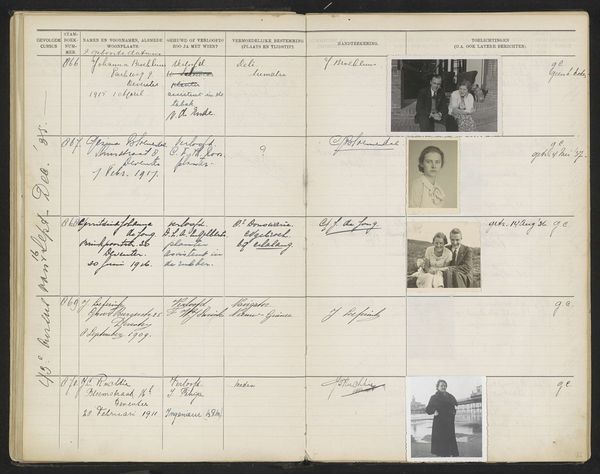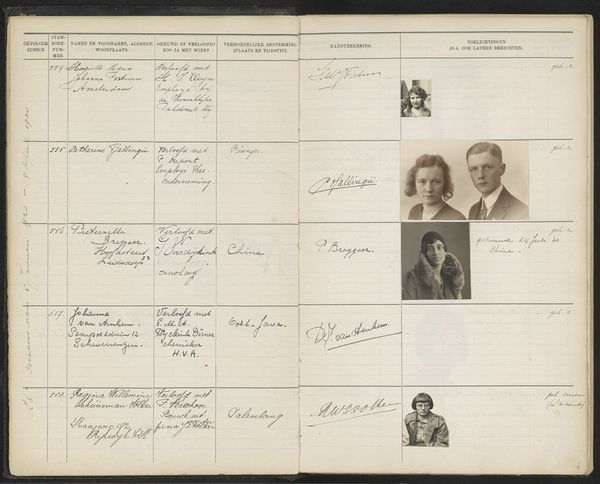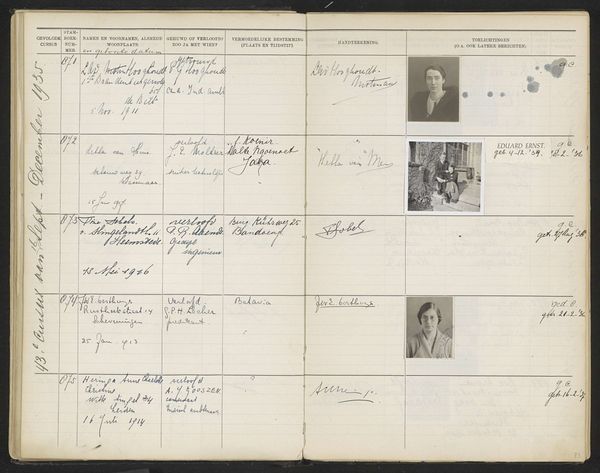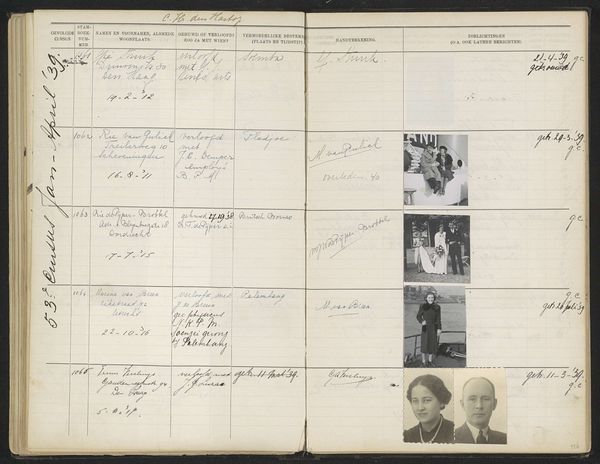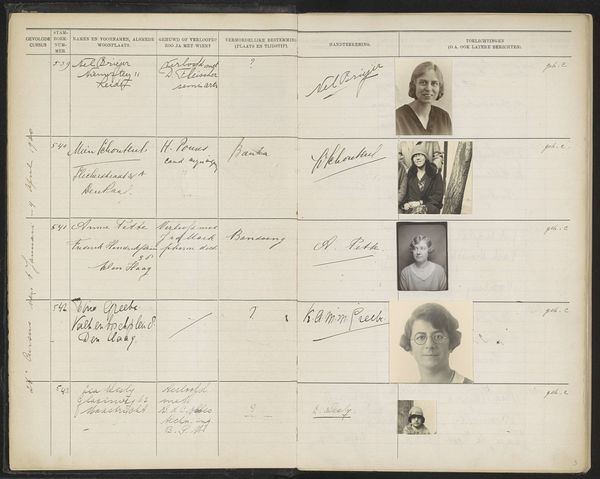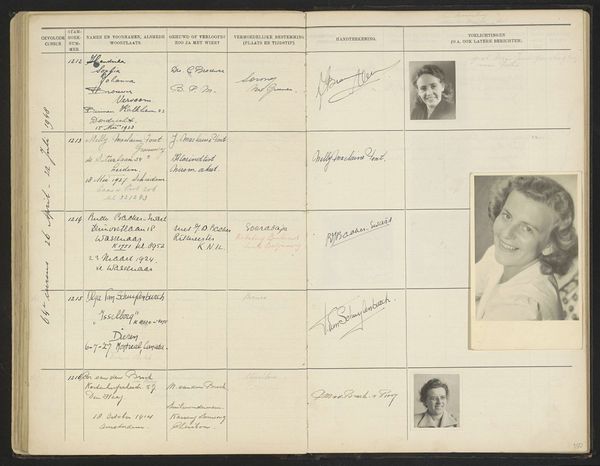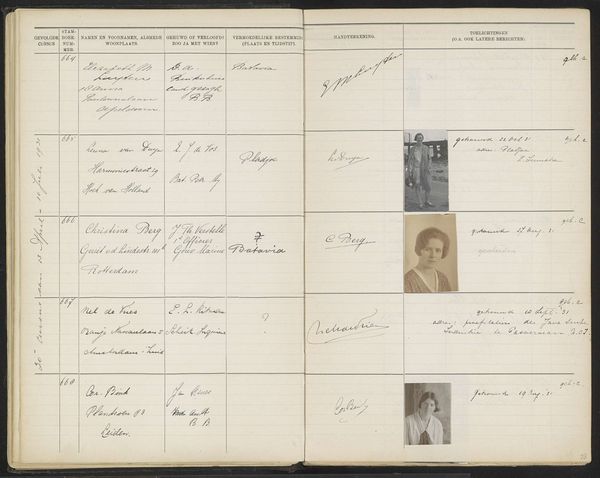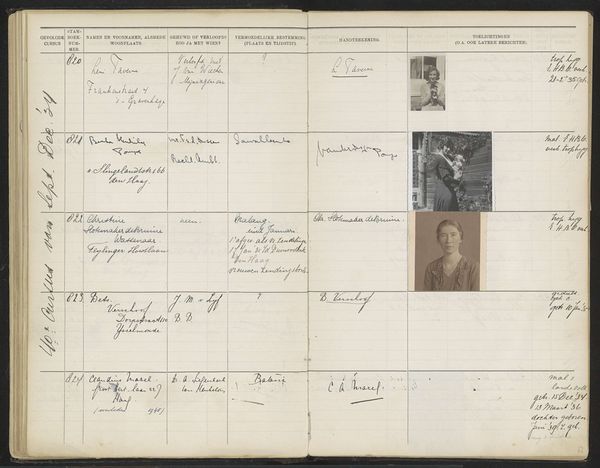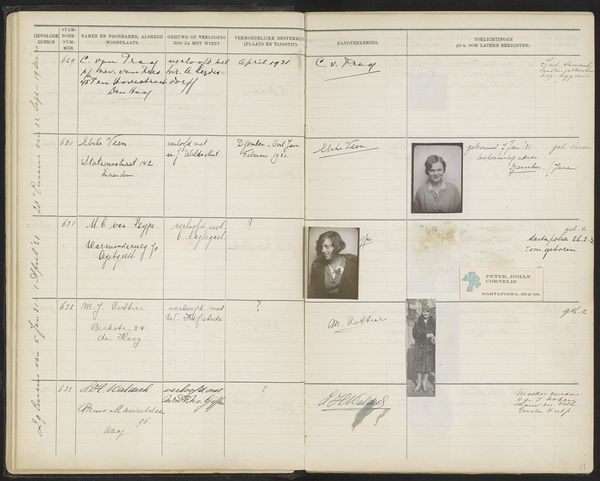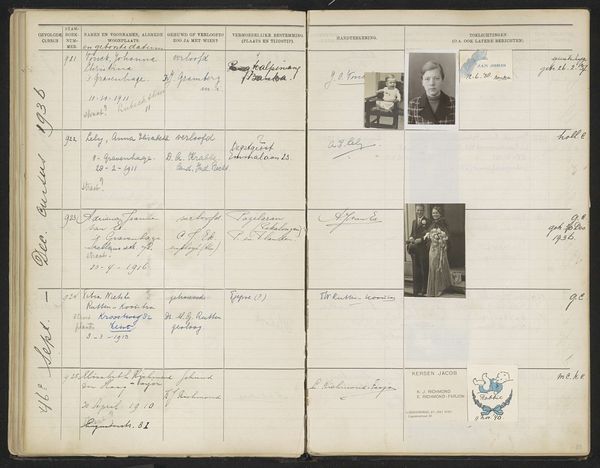
Blad 148 uit Stamboek van de leerlingen der Koloniale School voor Meisjes en Vrouwen te 's-Gravenhage deel II (1930-1949) Possibly 1947 - 1949
0:00
0:00
paper, photography
#
portrait
#
paper
#
photography
#
modernism
Dimensions: height 337 mm, width 435 mm
Copyright: Rijks Museum: Open Domain
Editor: This page comes from a student registry of the Colonial School for Girls and Women in The Hague, likely dating between 1947 and 1949, composed of photographs on paper. It gives such an official and somewhat sterile feel. What is your reading of this registry as a cultural object? Curator: This registry, viewed through a historical lens, reveals the institutionalization of colonial education for women in the Netherlands. It raises crucial questions: What role did these schools play in shaping colonial administration and ideology? How did the portraits and biographical data contained within these pages construct identity and belonging, both for the students and within the larger colonial project? Editor: The women’s portraits, they are somehow frozen in time, serving an administrative function now seen within the larger context of colonialism. I wonder, what do they make visible to you, as representations? Curator: Precisely. The very act of cataloging and displaying these women visually, in this specific way, speaks to power dynamics and the politics of representation. Think about how this registry served to create a visual archive, perpetuating colonial structures and framing perceptions of these women in a very specific socio-political way. Also, do you think the act of "keeping records" played a role? Editor: It did; I see how the photos became tools. Do you think viewers in the present can also become actors? Curator: Yes, the active engagement with archival material today helps us to re-evaluate and question past power structures, prompting necessary discussions about the legacy of colonialism and how its effects persist. The school then had social goals of creating an ideal Dutch image. But with open-minded contemporary consideration, its effect can transform toward greater understanding. Editor: Seeing how these personal records intertwine with larger narratives offers such a crucial view. Curator: Indeed. Hopefully we learn to approach such sensitive imagery with thoughtfulness and historical knowledge.
Comments
No comments
Be the first to comment and join the conversation on the ultimate creative platform.
